Abstract
In view of the importance of the problem of insecticide sorption by certain soils, and its possible implications for mosquito control, an investigation was carried out on the influence of some factors governing sorption.
In experiments with thin layers of homogenized soil/insecticide mixtures, in which no diffusion took place, changes in relative humidity had a pronounced influence on the effectiveness of the insecticide, a 10% increase in humidity doubling the toxicity. Further experiments using DDT labelled with 14C showed that the effect of humidity was the only factor influencing toxicity.
Studies with 14C DDT and bio-assay determination of non-labelled DDT and dieldrin showed that movement of the insecticide in the soil was blocked at both very high and very low humidity, and that inward migration was found only at intermediate humidities. It was also observed that the migration of water in the soil caused the insecticide to move in the same direction.
As at a high relative humidity the inward migration of the insecticide is blocked, and as the initial loss in effectiveness by sorption is counterbalanced by the greater availability of the remaining toxicant, the application of the usual field dosage of dieldrin (0.5 g/m2) remained effective for a considerable period. This would suggest that sorption might well be a problem in the field only when humidity is low. In work on means of reducing sorption under dry conditions, encouraging results were obtained with wettable powders based on ground solidified melts of dieldrin and certain resins.
Full text
PDF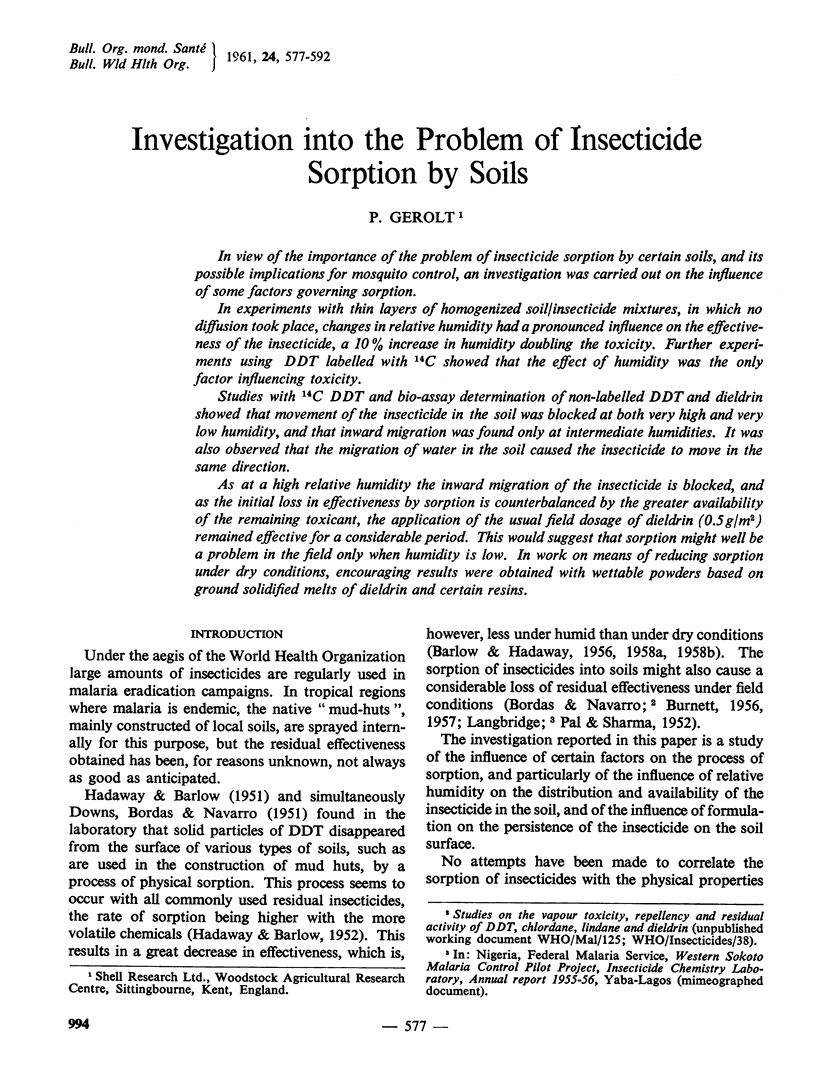
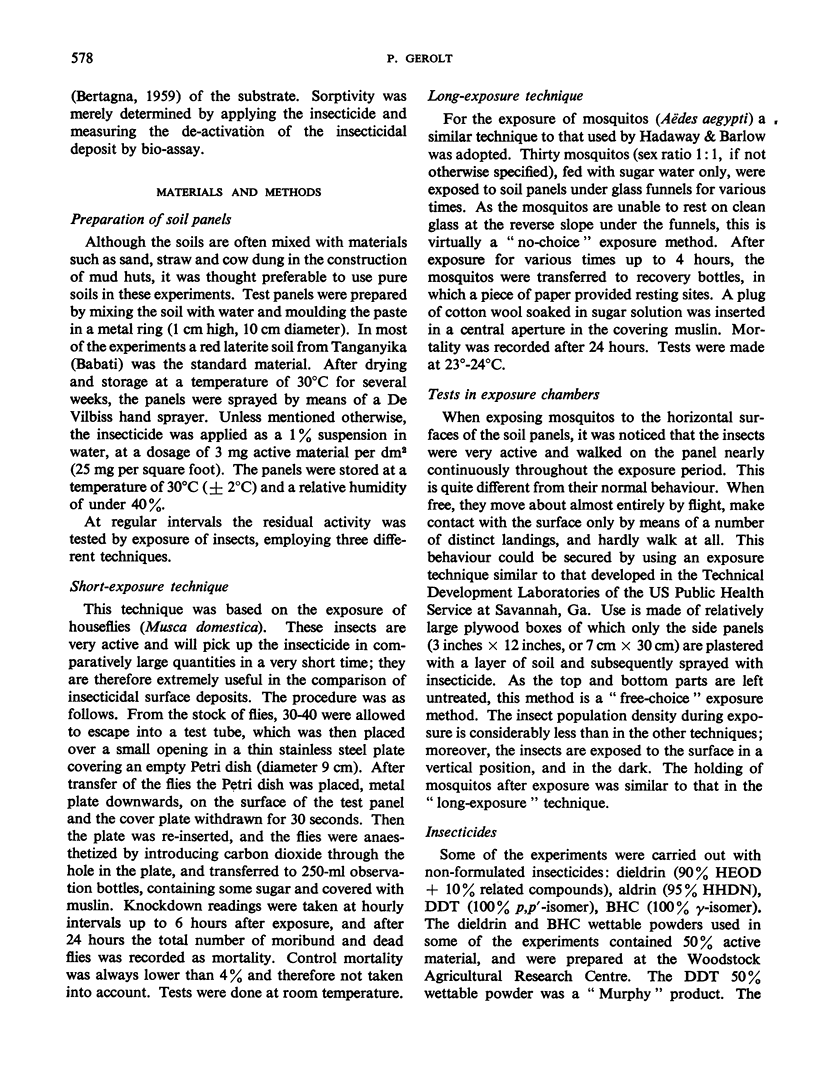
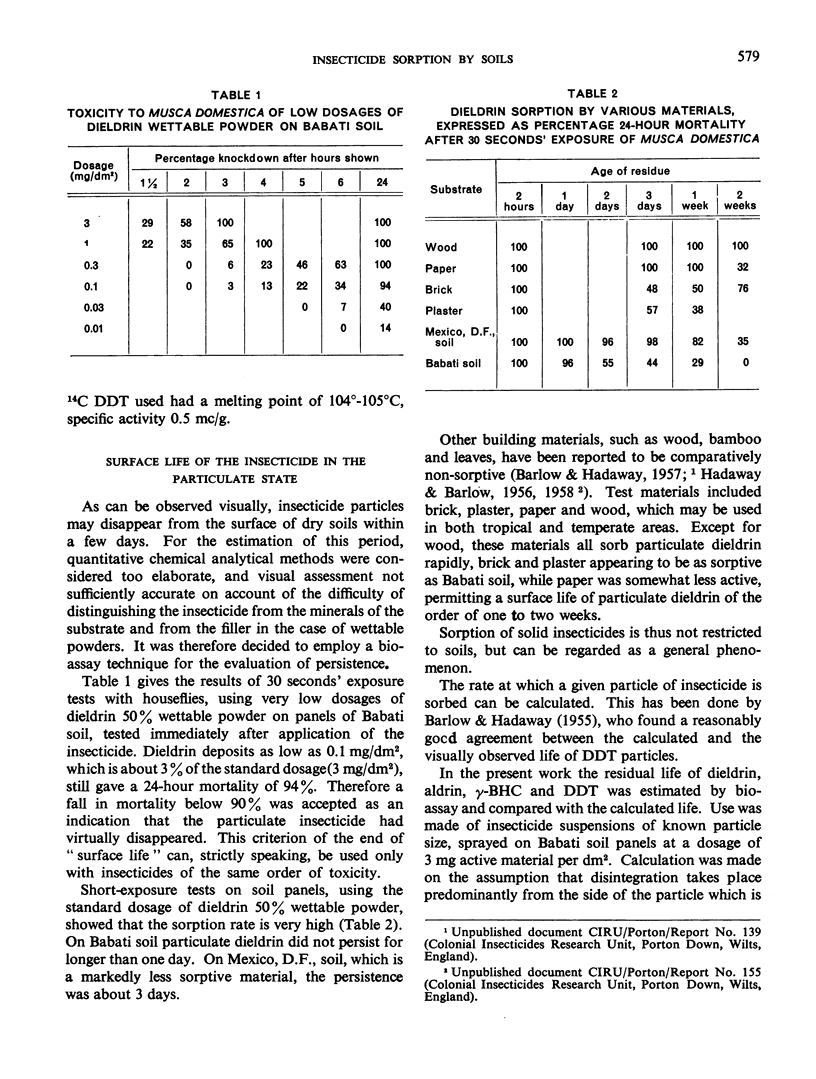
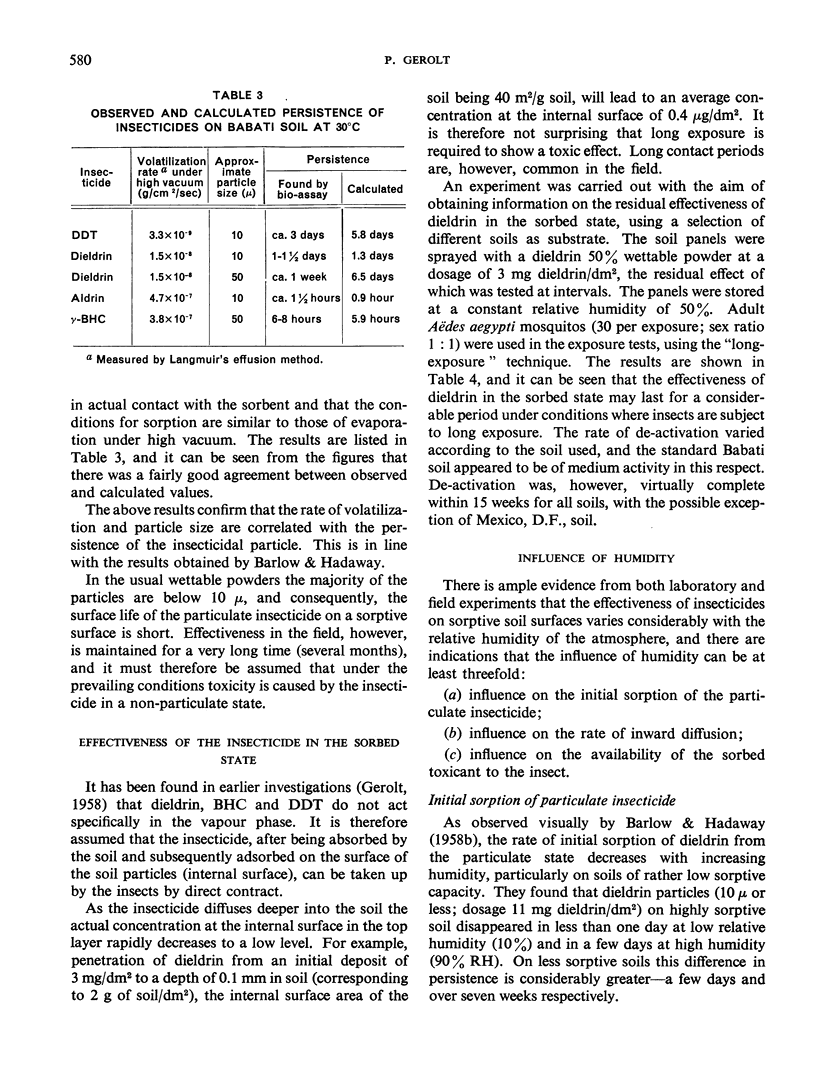
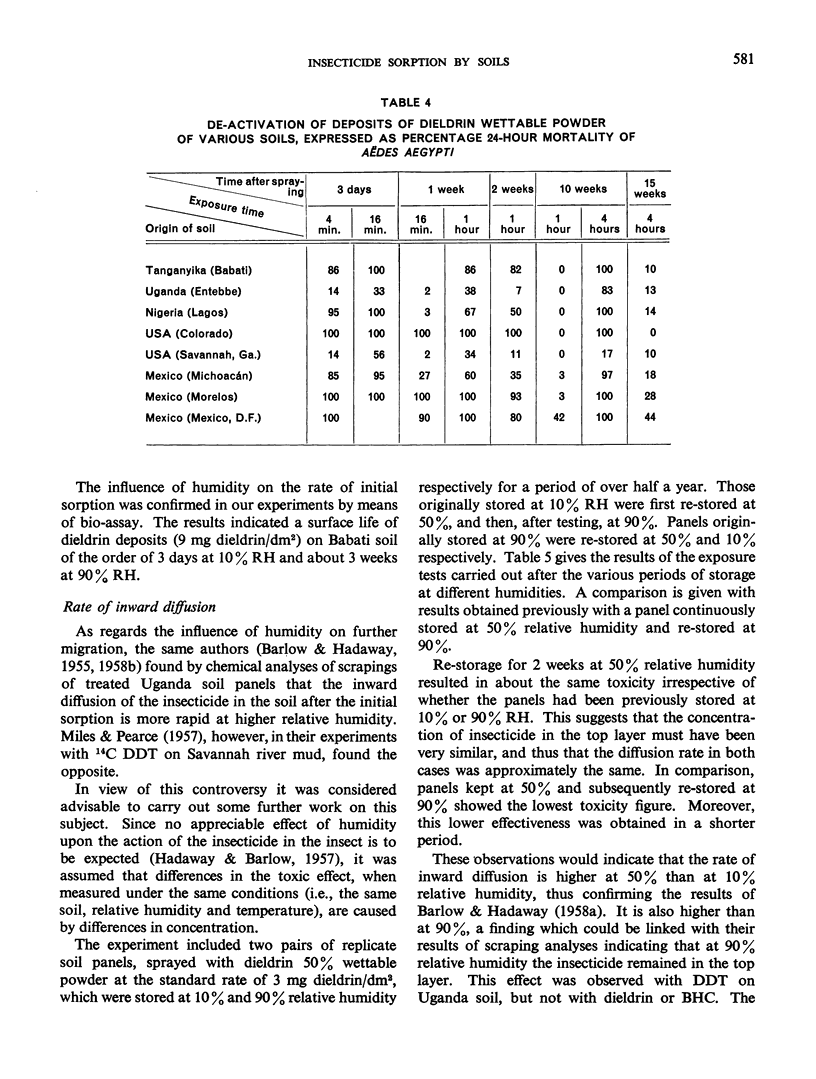
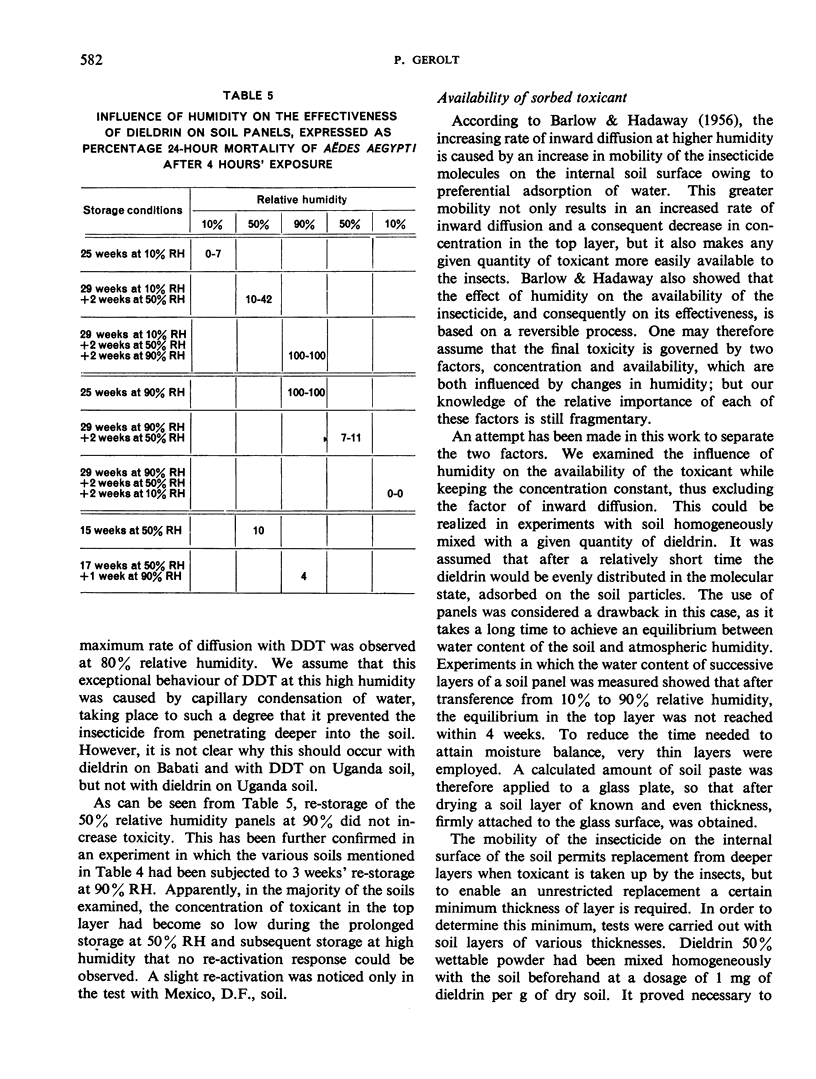
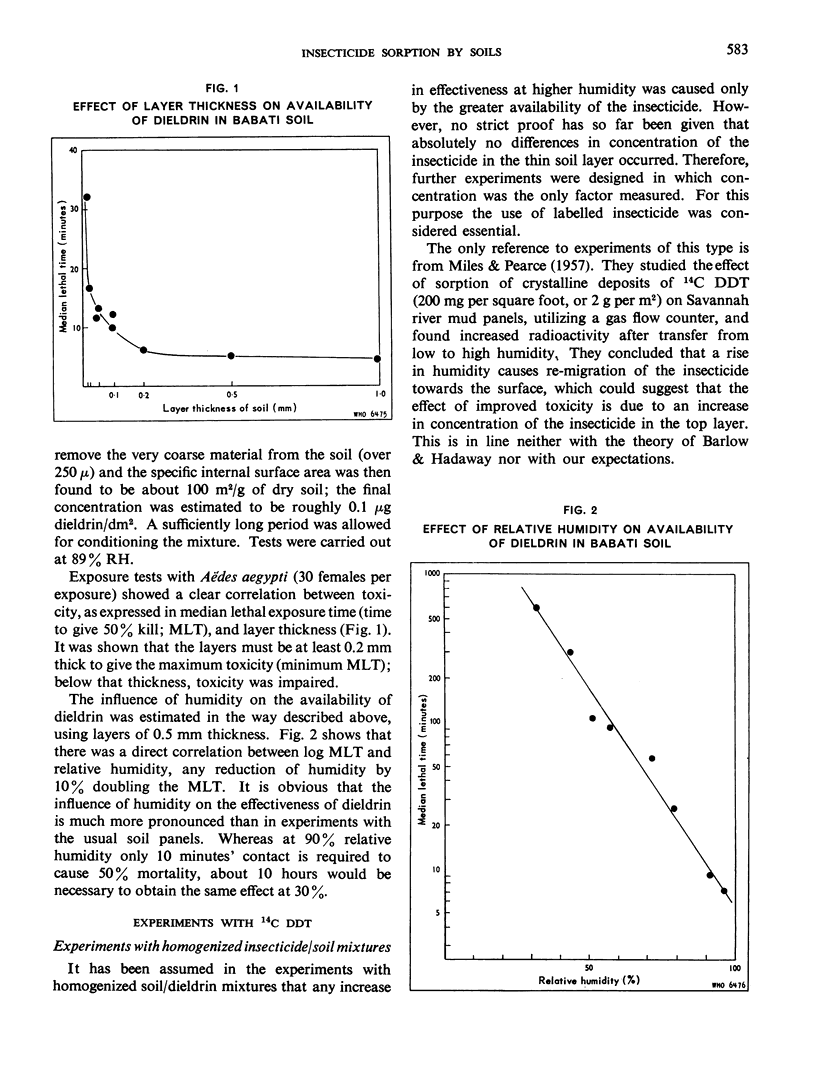
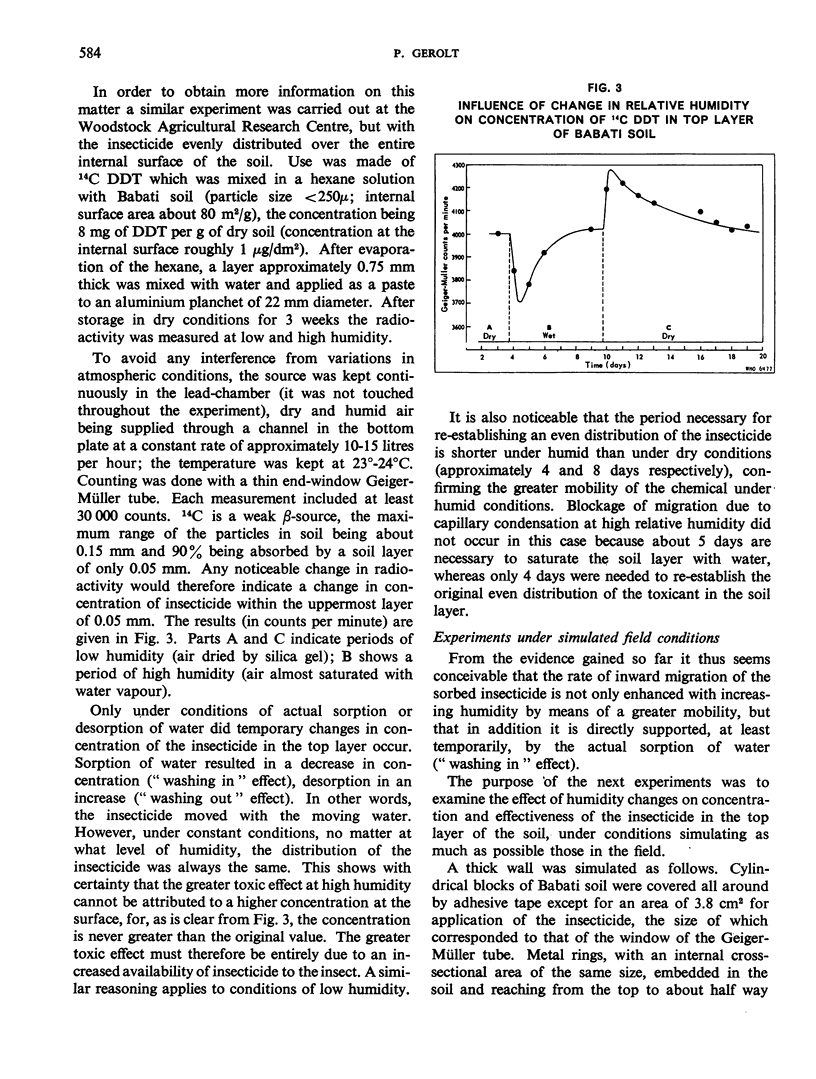
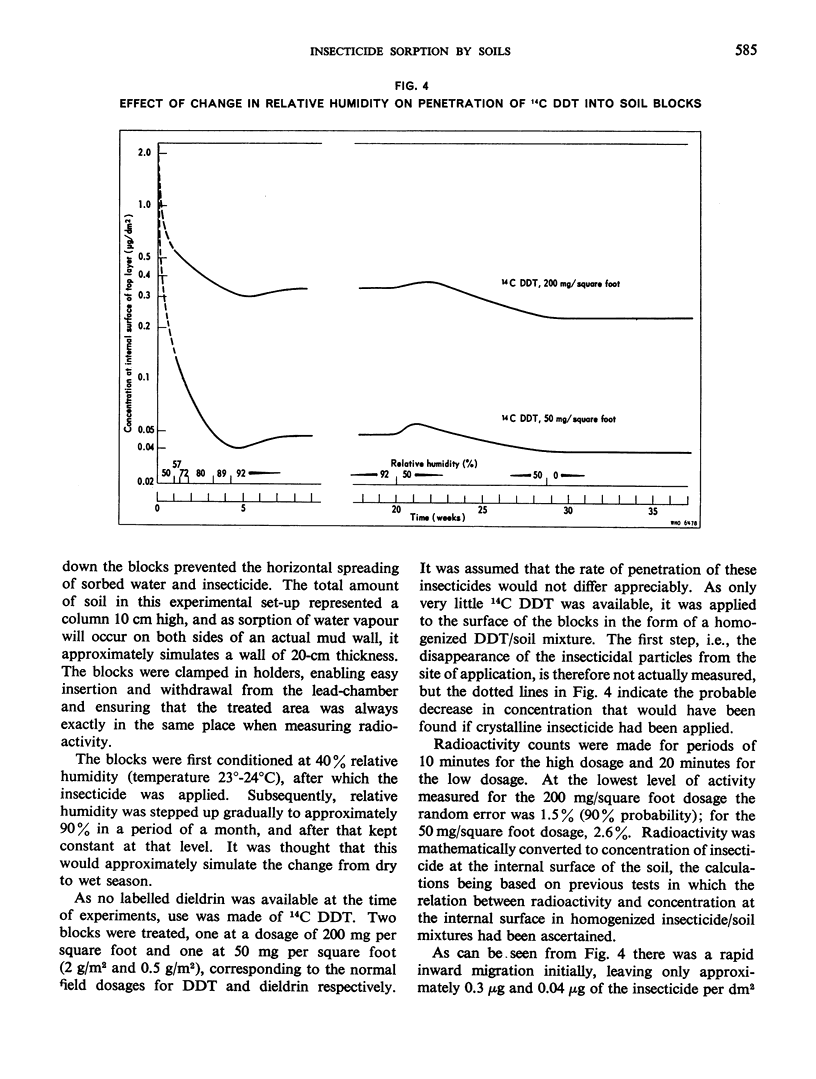
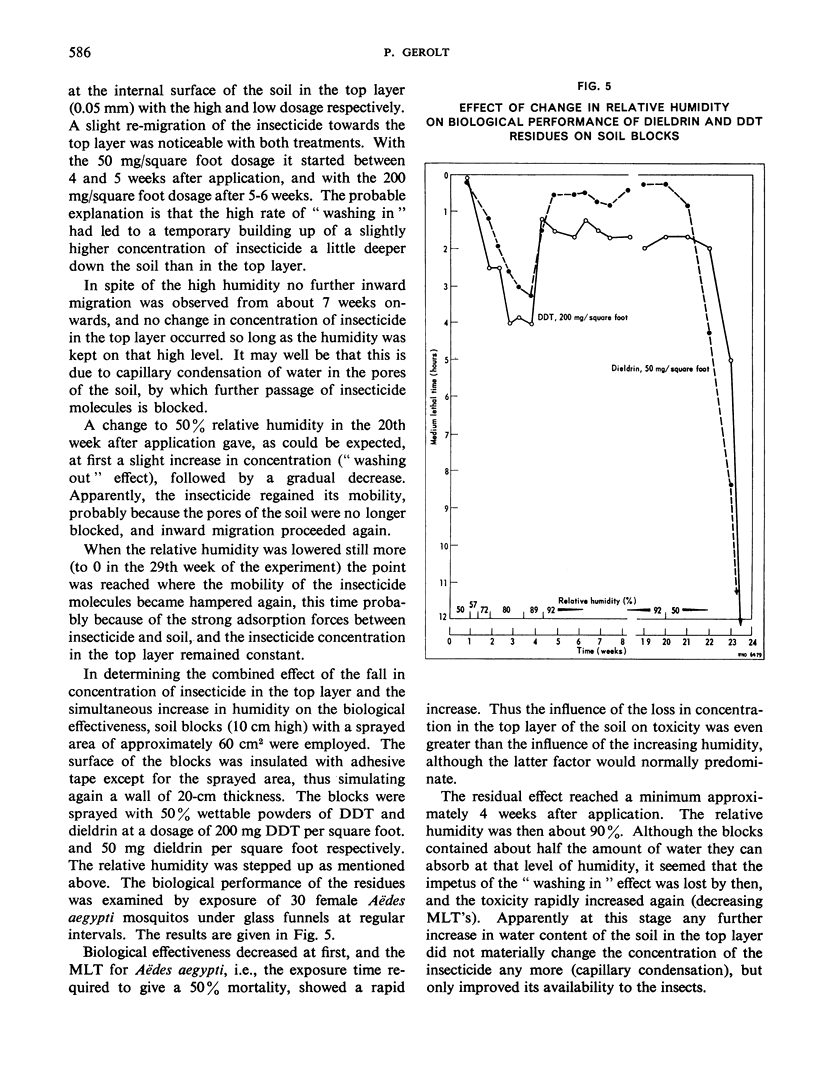
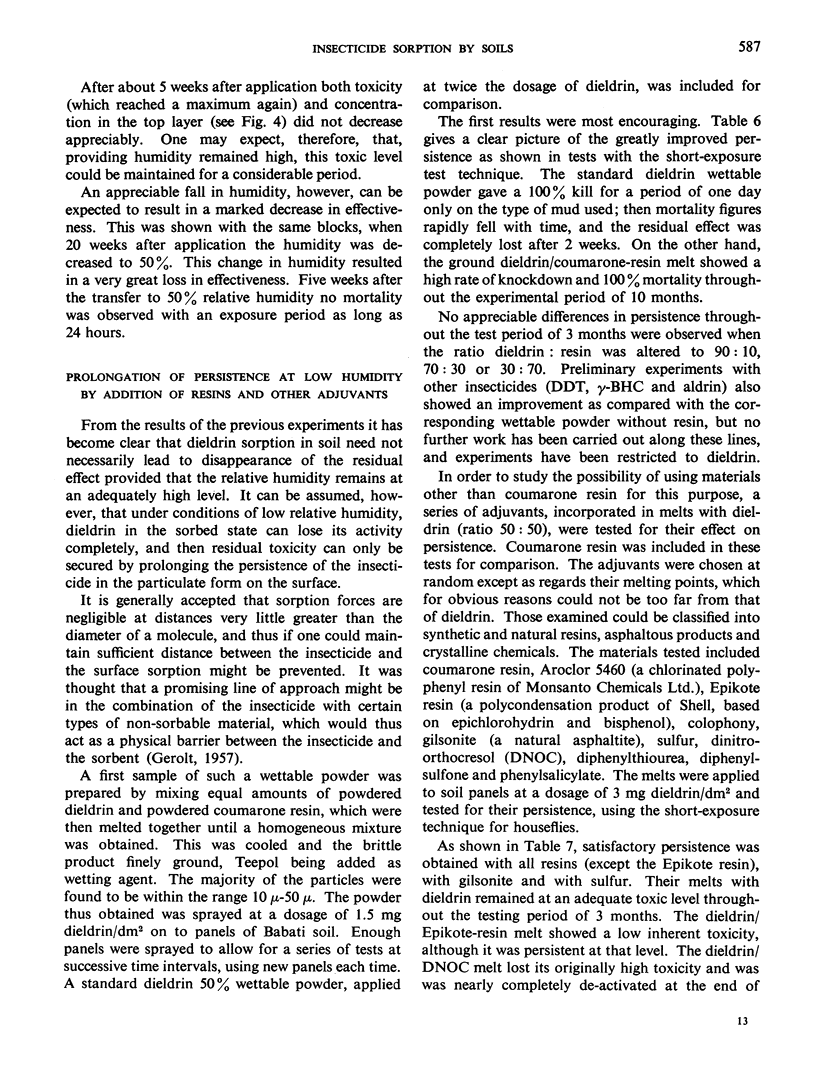
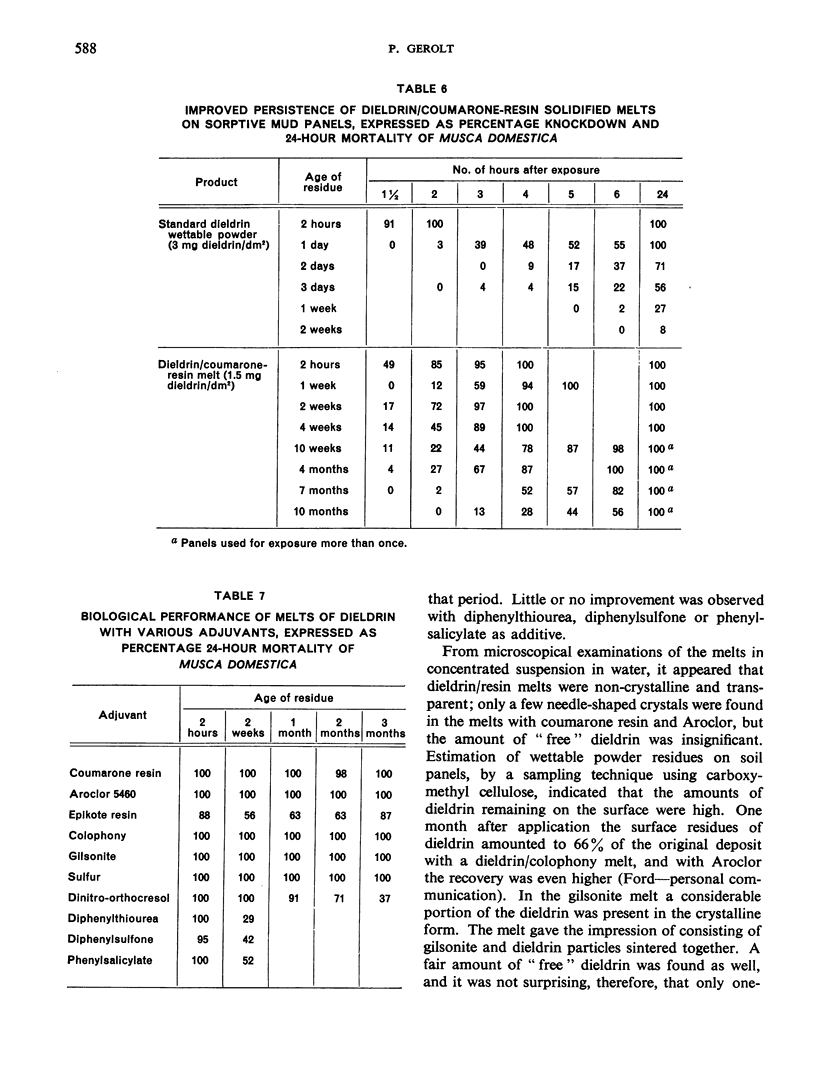

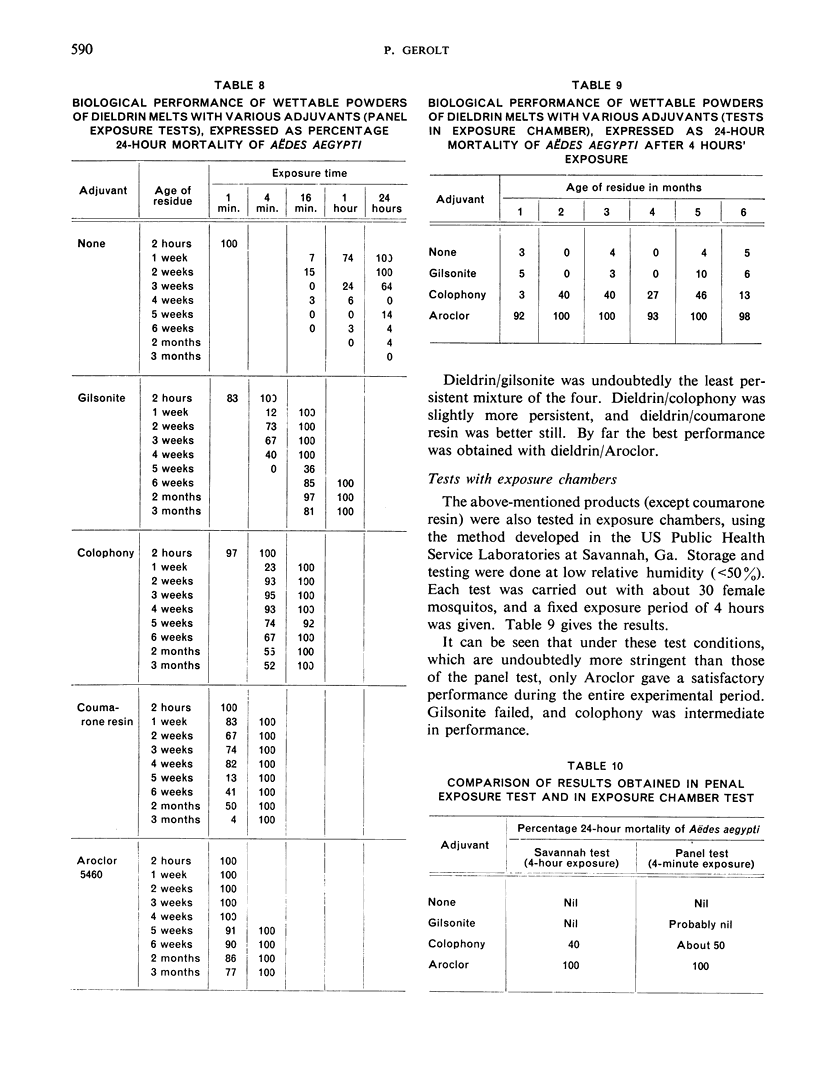
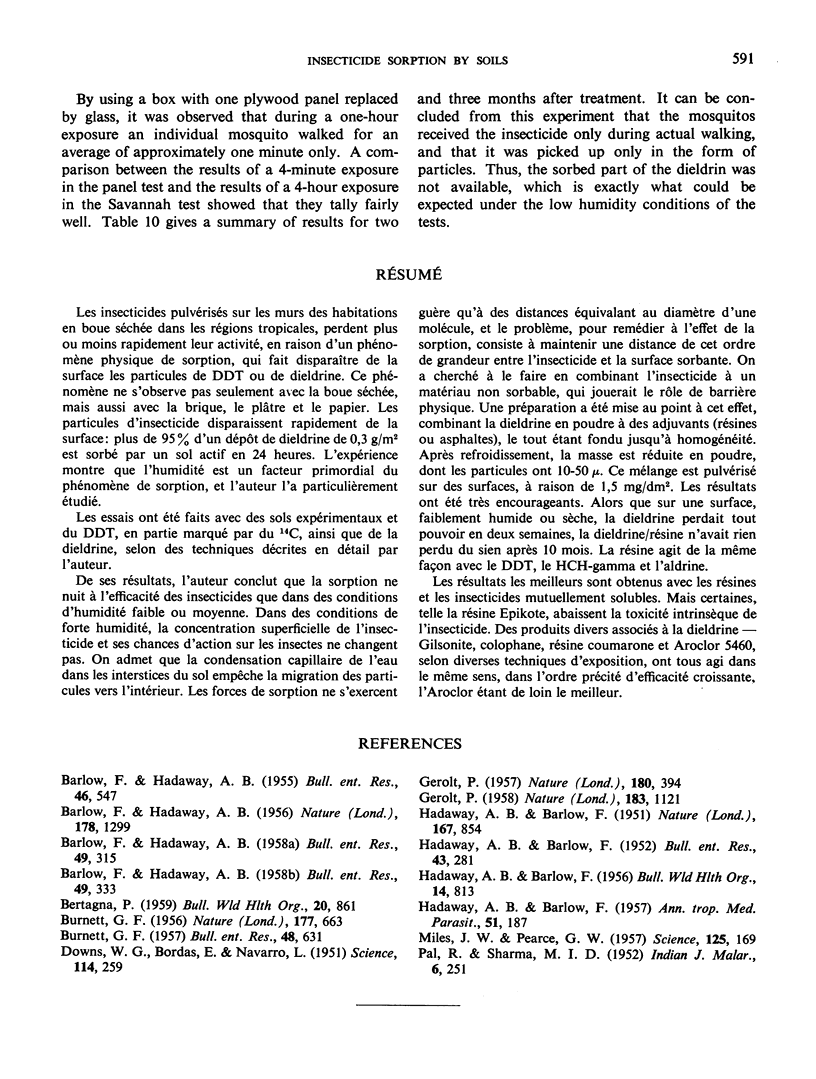
Selected References
These references are in PubMed. This may not be the complete list of references from this article.
- BARLOW F., HADAWAY A. B. Effect of changes in humidity on the toxicity and distribution of insecticides sorbed by some dried soils. Nature. 1956 Dec 8;178(4545):1299–1300. doi: 10.1038/1781299a0. [DOI] [PubMed] [Google Scholar]
- BERTAGNA P. Residual insecticides and the problem of sorption. Bull World Health Organ. 1959;20:861–889. [PMC free article] [PubMed] [Google Scholar]
- BURNETT G. F. Variation in mortality with differences in humidity among mosquitoes exposed to BHC, dieldrin and DDT. Nature. 1956 Apr 7;177(4510):663–664. doi: 10.1038/177663c0. [DOI] [PubMed] [Google Scholar]
- DOWNS W. G., BORDAS E., NAVARRO L. Duration of action of residual DDT deposits on adobe surfaces. Science. 1951 Sep 7;114(2958):259–262. doi: 10.1126/science.114.2958.259. [DOI] [PubMed] [Google Scholar]
- GEROLT P. Vapour toxicity of solid insecticides. Nature. 1959 Apr 18;183(4668):1121–1122. doi: 10.1038/1831121a0. [DOI] [PubMed] [Google Scholar]
- HADAWAY A. B., BARLOW F. Sorption of solid insecticides by dried mud. Nature. 1951 May 26;167(4256):854–854. doi: 10.1038/167854a0. [DOI] [PubMed] [Google Scholar]
- HADAWAY A. B., BARLOW F. The influence of temperature and humidity upon the action of insecticides. I. During the post-treatment period. Ann Trop Med Parasitol. 1957 Jun;51(2):187–193. doi: 10.1080/00034983.1957.11685807. [DOI] [PubMed] [Google Scholar]
- MILES J. W., PEARCE G. W. Rapid method for measurement of rate of adsorption of DDT by mud surfaces. Science. 1957 Jul 26;126(3265):169–170. doi: 10.1126/science.126.3265.169. [DOI] [PubMed] [Google Scholar]


